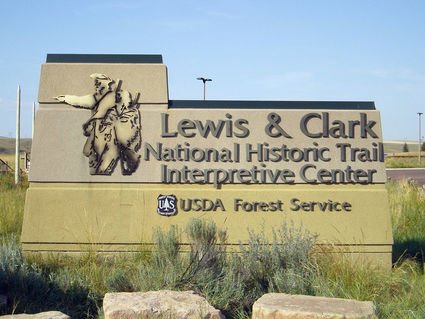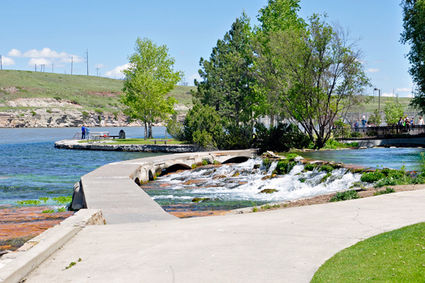Spring Means Field Trip Time: Meadowlark Elementary 5th Graders Headed to Great Falls
April 10, 2019
Spring is traditionally a time for field trips. Warmer weather and predictably passable roads make such scheduling possible. In the spirit of spring travel, on April 11, Meadowlark Elementary School fifth graders will be traveling to Great Falls, where they will visit Giant Springs Fish Hatchery and the Lewis and Clark National Historic Trail Interpretive Center.
Originally constructed in 1928 and updated in 1984, Giant Springs Fish Hatchery is a production facility adjacent to the Giant Springs Park complex on Giant Springs Road along the Missouri River. The hatchery visitor center and show ponds are open to the public from 8:00 a.m. to 4:30 p.m. daily. One of the school's two fifth grade teachers, Mrs. Jill Paulsen contacted LeAnne Wipf, Administrative Assistant with Region Four of the Fish Wildlife and Parks, to set up the tour.
In 1984, all of the old round ponds-except for one, which is now the show pond-were replaced by 24 outside raceways. These outside raceways receive 15,000 gallons of water per minute, while water to the hatchery building is 650-700 gallons per minute. The hatchery building houses the egg incubators and 40 interior raceways, which can be viewed from the visitor center.
Giant Springs, the hatchery's water supply and one of the largest springs in the country, puts forth over 150 million gallons of water each day. This water forms the headwaters of the Roe River, which is only 201 feet long, distinguishing it as one of the world's shortest rivers.
Because it is from a very deep aquifer, the Giant Springs water is high in nitrogen and low in oxygen. To reverse these conditions and to provide better quality water for fish rearing, the water is pumped through packed columns.
Meadowlark students will be getting a tour from a fish biologist for the Montana Fish, Wildlife and Parks. According to fifth grade teacher, Mrs. Lesa MacLeod, the trip complements the school's science curriculum with a study of life science and ecosystems.
While in Great Falls, the two classes will also tour the Lewis and Clark National Historic Trail Interpretive Center, where they will re-live Lewis and Clark's 1804-1806 Expedition, an 8,000-mile journey across western North America. Built into a scenic bluff with views of the Missouri River, the Center's exhibits and ranger programs bring the spirit of exploration to life.
Students will begin their journey with an introductory video. Then, they will tour the self-guided exhibit hall's centerpiece, a two-story diorama of the portage of the Missouri River's five great falls. Here, they will test their strength and ability to pull a boat against the Missouri's current.
As it chronicles the journey of Lewis and Clark, the Interpretive Center also captures important experiences with Plains and Northwest Indians, shares details of the plants and animals that expedition members documented, and recreates the Expedition's disappointment at the impossibility of a Northwest Passage water route. Students will also experience several trails that focus on the important roles that landscape and wildlife played in the Lewis and Clark Expedition's time in Montana. Finally, they will join a ranger for a hands-on bartering lesson.
"This portion of the trip ties into our social studies curriculum and also goes along with our Native American studies, supporting the Indian Education for All mandate," MacLeod said. "Hopefully the students will have a fun-filled educational experience," she added.




